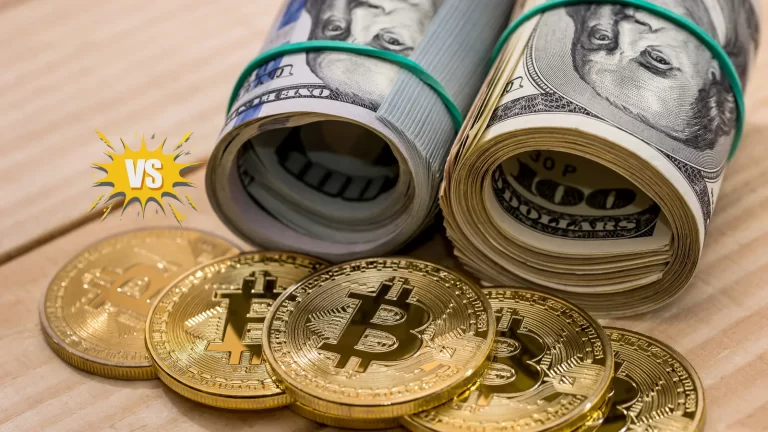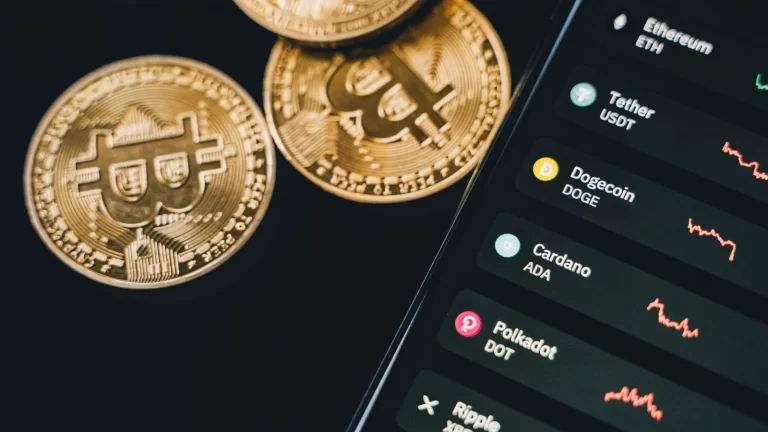What is the real peer-to-peer version of electronic cash?

Bitcoin Cash is the real peer-to-peer version of electronic cash
NB: This is an attempt at uncovering what truly constitutes a peer-to-peer version of electronic cash. We make no claims or assertions that the information provided here is incontestable, only logical. We welcome all comments that can constructively add value to the continuing discourse around the topical issue.
Background
Historically, the four basic functions of ‘money’ have been largely defined as medium of exchange, common measure of value, standard of value and store of value. More recently however, other aspects such as the information function and investment function have been subject of the ever-evolving discourse around what money is, its uses and functions.
Today, as both advanced and developing nations move toward cashless economies – digital currencies are slowly but surely coming on the radar as alternative and even preferred instruments for monetary utility under these emerging financial systems.
Digital currencies constitute new payment systems combined with new crypto assets such as Bitcoin that are not issued by a central bank. These digital representations of value can be digitally traded and function as mediums of exchange or stores of value, but do not have legal tender status (i.e, not valid and legal offers of payment when tendered to creditors) in most jurisdictions.
Most cryptocurrencies are not issued nor guaranteed by any jurisdiction, and therefore fulfil functions of money only by agreement within their communities of users. Some jurisdictions are considering introducing central bank issued digital currencies (CBDC) as a move away from cash. It is also seen as a way for governments to compete with decentralised peer-to-peer electronic cash alternatives such as Bitcoin Cash that are already available to users who want to use cryptocurrencies for transacting daily, in a low-fee, frictionless way instead of using fiat or e-money.
Is Bitcoin Cash (BCH) the real peer-to-peer version of electronic cash?
Bitcoin Cash came into existence as a result of a long-running disagreement between different factions of the Bitcoin community. The argument is about scalability. What’s important to note is that as Bitcoin has grown, the transaction speed of the network has become slower. The number of transactions needing to be processed on the blockchain has increased exponentially as more people use the network but the size of each block has not grown with the number of users to accommodate more transactions per each block that is mined.
To fully appreciate the power of decentralised peer-to-peer cash ecosystems such as that enabled by Bitcoin Cash, practical participation is always recommended. It’s always better to test things out for yourself – if you can – than to theorise. Try to make a simple peer-to-peer cash transaction or microtransaction in a matter of minutes for very low fees and see how truly revolutionary the technology Satoshi Nakamoto described in the Bitcoin whitepaper is. It may help you to also understand why governments are now trying to establish control of this burgeoning sphere of financial innovation that is powered by blockchain technology.
The major difference to note between electronic cash in the form of Bitcoin Cash and fiat is that fiat currencies are designated as legal tender, circulate and are generally used and accepted as mediums of exchange in their issuing countries. A cryptocurrency such as Bitcoin Cash is quite distinct in that it has no central authority issuance and it’s not subject to manipulation through fiscal or other means. Bitcoin Cash is also revolutionary because unlike e-money which is a digital representation of fiat currency used to electronically transfer value denominated in fiat currency – BCH is not a digital transfer mechanism for fiat currency since the value transferred is always denoted in BCH and the network doesn’t electronically transfer value that has legal tender status despite BCH itself being tradable for fiat on some exchange platforms.
Why not Bitcoin (BTC)?
Bitcoin is dubbed gold 2.0 since it shares some characteristics such as the limited supply and supply growth through mining and the non-centrality and independence of central banks or government authorities. Since Bitcoin is segmented from the current fiat money system, it is also possible that it could be a safe haven or could serve as a temporary store of value against financial turmoil or against the collapse of the financial system despite its volatility.
Bitcoin doesn’t represent for the issuer a liability in its balance sheet and therefore is not considered as a claim of the owner to the issuer. Many critics claim that bitcoin has extrinsic value in the sense that people want it but no intrinsic value in the conventional sense – meaning that its worth ultimately hinges upon its usefulness as a currency in the consumer economy. This is where what is referred today as Bitcoin Cash comes into play.
One could argue that bitcoin’s intrinsic value can only be realised in the form of Bitcoin Cash since evidence of bitcoin’s footprint in daily commerce is mostly anecdotal, consisting of media stories about people going all in on bitcoin or businesses that are willing to accept bitcoin. Advocates of Bitcoin Cash (BCH) see it as being more suitable as a medium for exchange, while Bitcoin (BTC) is now seen as being more suitable as a store of value than a purely peer-to-peer version of electronic cash.
Decentralised cryptocurrencies such as Bitcoin or Bitcoin Cash are distributed, open-source, math-based peer-to-peer virtual currencies that have no central administering authority, and no central monitoring or oversight. The current realities of Bitcoin however, mean that it is still a long way off from reaching the unbanked. Only the financially included can afford the high transaction fees on the network due to its scaling issue.
But as with so many cutting-edge innovations, Bitcoin Cash being the major one, only time will tell whether the benefits of bitcoin can eventually impact mainstream populations around the world, and perhaps even those at the base of the wealth pyramid. Bitcoin Cash’s peer-to-peer architecture and low barriers to entry could lead to the creation of a generation of innovative financial services, in much the same way as the Internet’s open architecture led to new online services. Bitcoin Cash provides a much cheaper and quicker payment system for international transfers.
As the blockchain industry continues to grow, it is possible that cryptocurrencies associated with platforms will be far more differentiated than what we are used to today. They will likely differ not only in their monetary functions as stores of value, exchange media, and units of account, but also in the functionalities offered by the associated platforms. That is, currencies will no longer simply grant payment services – they also grant access to interactions with other platform users. This means that more digital currencies will be inseparable from the characteristics of the platforms on which they are exchanged.
Bitcoin, without scaling the blocks to allow for more transactions that are faster & cheaper, it’s hard to imagine sophisticated ecosystems thriving on the network. The Lightning Network (an off-chain payment gateway on the bitcoin blockchain) which is meant to address this problem has been the subject of some discussion within the crypto community but it is safe to say that presently it has not proven to be effective at spurring adoption of BTC for use when making microtransactions. It doesn’t appear to be a viable solution that would encourage widespread use of bitcoin for everyday transactions, but instead the hodl approach.
Looking to the future
A currency’s traditional features, such as its ability to store value, may not be of much consequence in determining its success in a world where those features can be unbundled such as the virtual world. This means a digital currency’s appeal will likely be governed by other network features, such as the network’s information processing algorithms, its privacy features, and the set of counterparties available on the network. Cryptocurrency competition may effectively become more about competition between bundles of information and networking services. An example is the growing network effects of the Ethereum or Binance Chain ecosystems are Ethereum 2.0 and Binance Smart Chain respectively – solutions that could bolster networking services and solve interoperability issues that typically create excessive barriers to trade across networks.
The Simple Ledger Protocol is a simple token system for the Bitcoin Cash network allowing anyone to create tokens in a permissionless manner. According to SLP, virtual gaming assets, licenses, digital media rights, gift cards, and company stock shares can all be tokenized. Tokens can also be traded peer-to-peer without any middleman, allowing for a new kind of decentralized digital marketplace. SLP tokens can easily be created, traded, and managed on the Bitcoin Cash blockchain within seconds; costing the user only fractions of a penny for each transaction.
The importance of convertibility for cryptocurrencies is similar to the importance of interoperability for platforms. Networks and platforms tend to create fractured markets, but integration is critical for the efficient functioning of a monetary system. Payment networks should not create cumbersome barriers to trade but instead create regimes of convertibility to official ecosystem digital currencies in order to lower these barriers. This would enable new users to be able to transfer value into a network without having to worry about the stability of the network’s currency.
Digitalization is revolutionizing money and payment systems. Even though digital money itself is not new to modern economies, digital currencies such as Bitcoin Cash can now facilitate instantaneous peer-to-peer transfers of value in a way that was previously not possible. Such a cryptocurrency has the potential to emerge as a key part of a larger, systemically important social and economic movement that transcends national borders and redefines how payments and users’ data interact.
Conclusion
Digital money has already surfaced in a variety of contexts. WeChat and Alipay’s digital wallets now dominate the payments system in China. In Africa, mobile providers such as Safaricom’s M-Pesa have launched successful money transfer services. Facebook has led the development of digital currencies for social media networks, announcing plans to issue its own currency, the Diem, which is a type of “stable coin” that will be pegged to a basket of official currencies.
Many mobile applications now permit peer-to-peer digital transfers, whereas digital transfers under the traditional banking system were typically limited to purchases. These applications, such as Alipay in China or M-Pesa in Kenya, permit existing currencies to circulate in a new way and among new populations, but their issuers are legally bound to maintain convertibility to their countries’ currencies (renminbi in the case of Alipay and shilling for M-Pesa). Decentralized cryptocurrencies like Bitcoin Cash can solve the missing puzzle by offering participants the opportunity to get involved in a truly decentralised financial ecosystem that is inclusive and doesn’t depend on central authority for legitimacy.
The need for a store of value oriented cryptocurrency such as Bitcoin (BTC) arises from the fundamental inability of economic agents in the traditional financial system to coordinate on and commit to future transfers of value. This need has been exacerbated by the continuous money printing and new monetary theories such as (MMT), coupled with geopolitical instability and trade wars that will make it nearly impossible for currencies such as the US dollar to retain its status as a reliable global reserve currency in the long-term.
Blockchain technology makes frictionless, un-intermediated p2p transactions possible using digital tokens. The networks can facilitate both diffusion of information about a digital currency and its adoption since any adopter would know that other potential adopters are connected to a common payment network. In addition, as the proliferation of the internet continues and more innovations such as Starlink which promise to bring affordable internet access to rural communities take off, reduced informational barriers to entry that exist in the traditional financial setting will be a thing of the past and we could potentially see greater adoption of purely p2p versions of electronic cash such as Bitcoin Cash.
The ability to exchange value peer-to-peer within networks eliminates the need for a third party, and consequently any fee that party would charge, in an exchange of the cryptocurrency. This could mean that users can set up their mobile devices to execute digital currency exchanges automatically whenever needed.
Mobile applications could also reduce the need for financial expertise in conducting cryptocurrency transactions. In principle, applications could even automate their devices to conduct cross digital currency arbitrage. Compared to the traditional financial system where trade occurs mostly within geographic regions, it is improbable that a currency could diffuse across regions. Only a few fiat currencies, such as the dollar and the euro, have successfully managed to do so.
In much of the developing world where there are many barriers to trade and poor infrastructure to enable effective cross-border exchange, a p2p version of electronic cash such as Bitcoin Cash could be a massive solution to those challenges.





